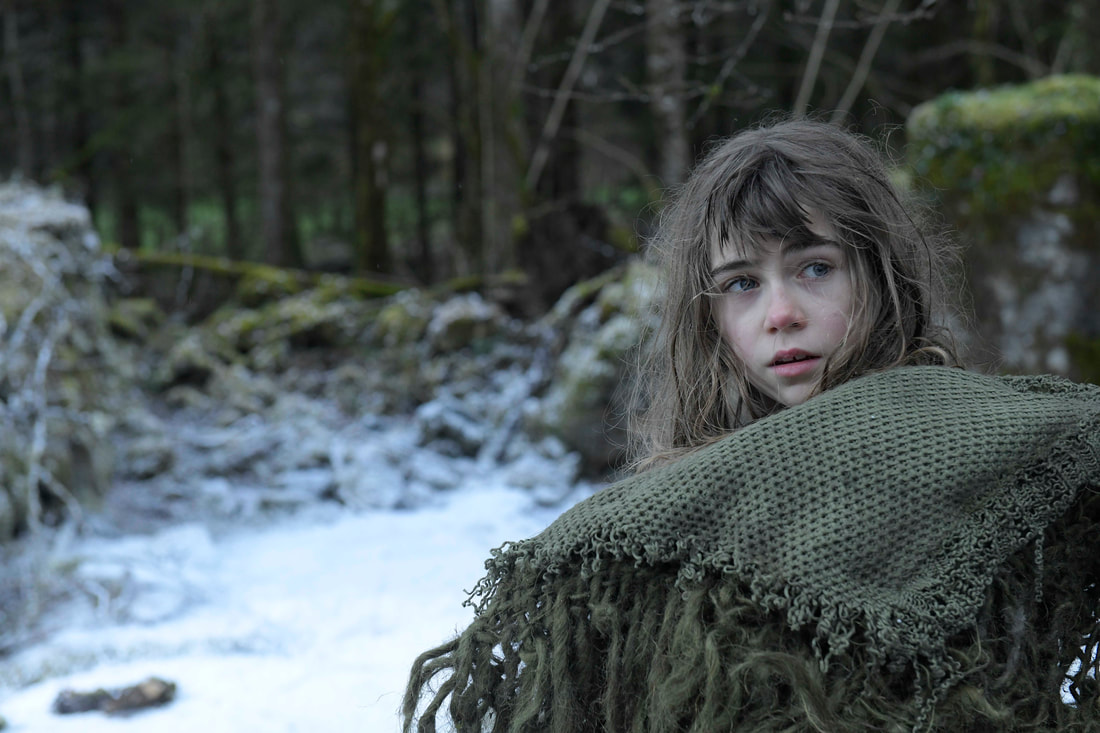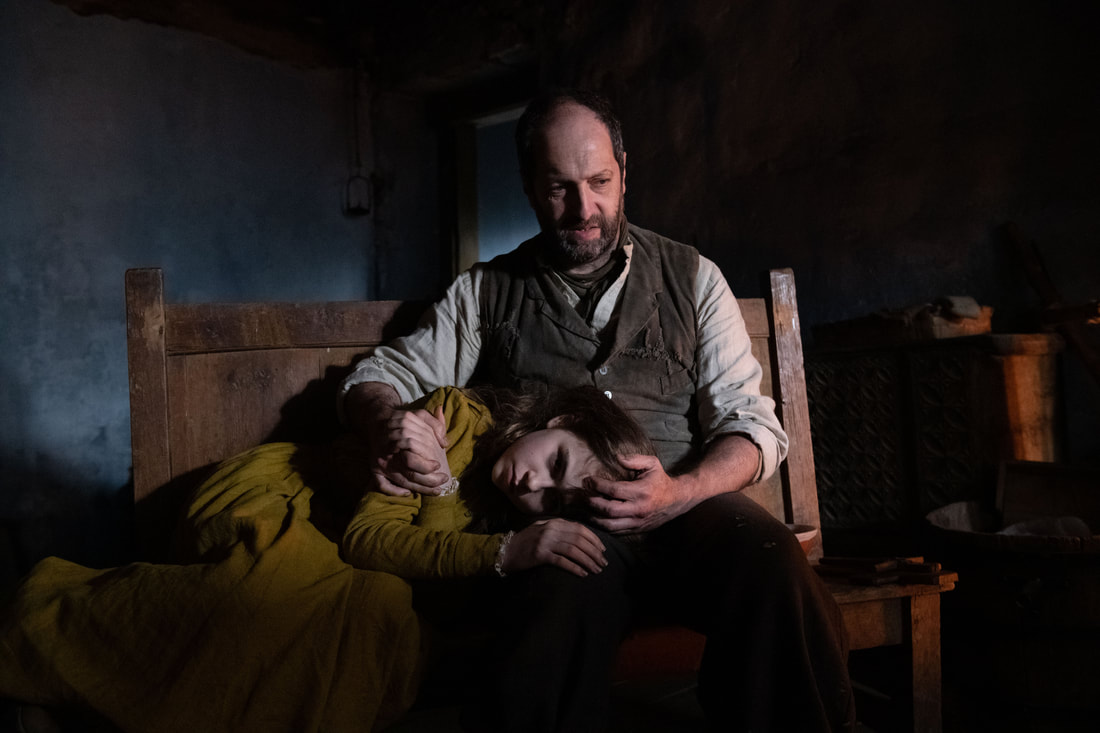|
Originally published on Elements of Madness. No country’s literature or filmography is short of romance stories. If a writer tells you they’re working on a piece about love, you’ll probably assume they’re talking about romantic love. We live in a culture that prioritizes romance and marriage, and it’s easy to forget that other types of love can be just as fulfilling. When Igor Legarreta and Jon Sagalá wrote a screenplay about a girl searching for love in her doomed existence as an immortal vampire, they decided not to turn their bloodsucker story into a romance. In All the Moons, which screened at the Fantasia International Film Festival in August, the young heroine discovers meaning in her wretched existence not from a romantic relationship, but from the love of a lonely man who becomes the parent she never had. Legarreta and Sagalá undertook a great challenge in choosing to write a vampire movie (at this point, what hasn’t already been done with vampires?), however, they made the most of this fantasy/horror sub-genre by exploring parent/child relationships and the question of consent in matters of life and death. The final product, directed by Legarreta, is an enchanting fantasy that wraps the joy, wonder, and melancholy of an entire lifetime into a single feature-length film. The story begins in 1876 during the third Carlist War. A young, unnamed girl (Haizea Carneros) finds herself on the brink of death after her orphanage is bombed. As she lies trapped under the rubble, she is approached by a mysterious woman in a dark cloak (Itziar Ituño). The desperate child begs the woman to save her, thinking that she is an angel. However, the girl has no idea what she’s really asking for. She wakes to find herself in the angel-woman’s care, thirsty for blood and unable to go outside during the daytime. Soon, unexpected circumstances separate her from her vampire mother, and she finds herself living alone in the wilderness for 10 years. The girl eventually meets a lonely dairy farmer named Candido (Josean Bengoetxea), who takes her in and gives her things she hasn’t had in a long time: a roof over her head, a father, a community, and even a name: Amaia. Though she did not choose her life, she begins to find meaning in it once again. All the Moons tells the story of an unconventional life. Naturally, the pacing is also a bit unconventional. The first portion of the story moves rather quickly, reflecting Amaia’s frightened and anxious perspective as her life turns upside down. This section of the film is filled with lots of movement, dialogue, and point-of-view shots, and we don’t have a lot of time to process all the narrative information. Much like the heroine, we’re simply along for the ride, watching and learning as much as we can. During the short portion of the film in which Amaia lives alone in the woods, the story slows down quite a bit. The change of pace is unsettling, but it seems that Legarreta and Sagalá did this intentionally. Amaia suddenly has total control over her life, and she must learn to make the most of circumstances that she did not choose. Learning to develop agency is a slow and unsettling process, but All the Moons successfully captures that frustrating process by slowing things down. There’s no dialogue during this section of the movie, but Carneros gives a remarkably engaging performance that speaks volumes about her character’s development. She conveys Amaia’s pain, loneliness, and frustration with grace and honesty, making it easy for us to believe that she’s a young adult trapped in the body of a child. The pace picks up again when Amaia and Candido meet and begin to bond. This is the most conventionally engaging section of the story. It keeps our attention with a handful of interesting new characters, a bit of humor here and there, and steadily rising conflict. Though unconventional, the pacing and sectional structure of All the Moons realistically captures the way we experience different stages of life. The only minor structural flaw is the rushed ending. The film skips over a significant period of Amaia and Candido’s life together, a period during which we’re led to assume their bond grows even stronger as they carry out their lives away from the religious judgement of Candido’s village. It makes sense to skip this period of their lives, but the quick narrative transition cheapens the story’s conclusion. All the Moons contains many important messages about non-romantic love and parent-child relationships, but it rushes into those messages too quickly. When all the themes of the story finally fall into place in the final climactic scene, we’re left wishing we had seen more of Amaia and Candido’s relationship outside of their conflicts with the religious villagers. All the Moons is about a girl who never grows up, so it’s no wonder that the world of the film recalls images of Neverland. Many of the scenes take place outside, and the gorgeous hills of Basque Country make the perfect setting for this fairytale-like story. Amaia spends the first several years of her vampire life living alone in a cave and marking the days with finger paintings on the wall. Her cozy, ragged little home looks like something straight out of Hook (1991). The intricate details of her living space, from the doll that she’s fashioned for herself to her scrappy clothing, tell an incredible story about her years in solitude and make up for the lack of dialogue in this section of the film. Pascal Gaigne’s light, twinkling score also makes the movie feel like an adventurous fairytale. Although the story is set in a real time and place, it’s easy to get wrapped up in the fantasy and forget the historical context. Since the vampires in this particular tale develop blistering sores the minute sunlight touches their skin, light and shadow play an especially important role in the cinematography. Imanol Nabea, who won the award for best cinematography at Fantasia, uses shadow and light throughout the film to tell a story about fear and trust. In the dark of the night, against the warm glow of a fire, Amaia learns the fearful secrets of her new life and begins to question the woman who rescued her. As glistening sunlight peaks in through the cracks in her cave, Amaia goes through a unique coming-of-age moment and learns to make the most of the cold and lifeless body she now inhabits. In the shadows of Candido’s humble home, Amaia hides from the priest who questions her purpose in the quiet mountain village, a shot that foreshadows the conflict to come. All the Moons is a genuinely beautiful film that makes the most of its setting, integrating its themes into every shot. With exquisite scenery and outstanding performances, All the Moons is an enchanting vampire fable that can’t be missed.
0 Comments
Leave a Reply. |
"Our embodied spectator, possibly perverse in her fantasies and diverse in her experience, possesses agency...finally, she must now be held accountable for it." Categories
All
|





